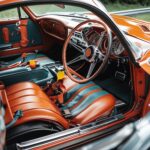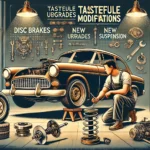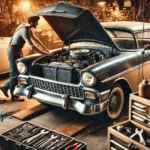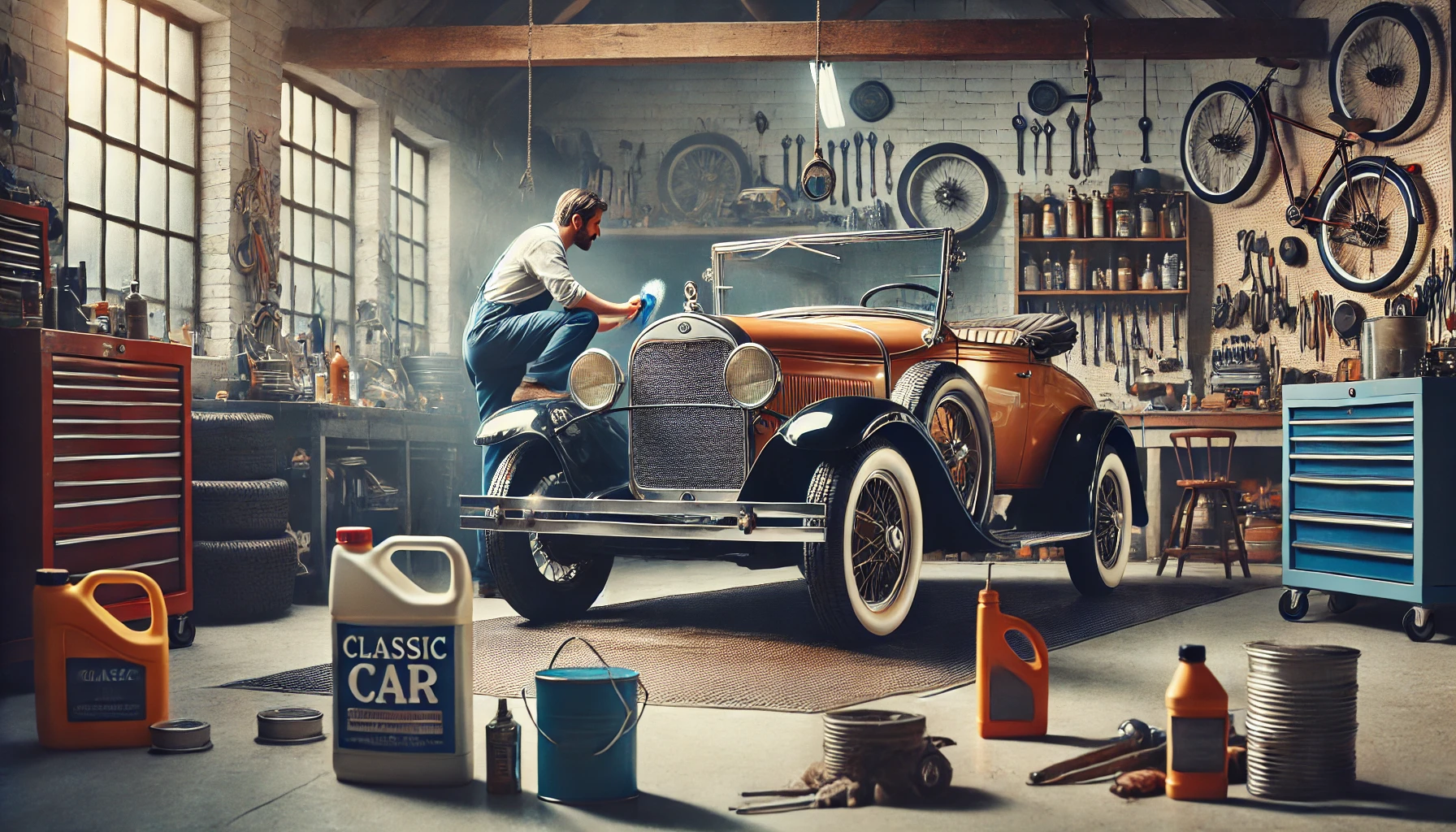Owning a classic car is a privilege, but preserving its beauty and performance requires consistent care. Unlike modern vehicles, classic cars need specialized maintenance to prevent wear, corrosion, and mechanical issues. Whether you drive your vintage car regularly or keep it as a collectible, these essential tips will help ensure its longevity.
1. Perform Regular Engine Maintenance
A well-maintained engine is the heart of a classic car. To keep it running smoothly:
🔧 Change the Oil Frequently: Classic cars need fresh oil more often than modern vehicles. Change the oil every 3,000 miles or at least once a year, even if the car isn’t driven frequently.
🛠 Inspect Belts and Hoses: Rubber components degrade over time, so check for cracks and replace them as needed.
⚙ Monitor Fluid Levels: Keep an eye on coolant, brake fluid, transmission fluid, and power steering fluid.
🚗 Start the Engine Regularly: Even if you’re not driving the car often, start it up at least once a month to circulate oil and prevent parts from seizing.
Pro Tip: Use high-quality, classic car-friendly motor oil with additives designed for vintage engines.
2. Keep the Battery in Top Condition
Classic cars often sit idle for extended periods, which can drain the battery.
🔋 Use a Battery Maintainer: A trickle charger will keep your battery from losing charge when not in use.
🔌 Disconnect the Battery: If storing the car long-term, remove the battery to prevent power drainage.
⚡ Check for Corrosion: Clean the battery terminals and apply dielectric grease to prevent oxidation.
Pro Tip: If your car still has an old-style lead-acid battery, consider upgrading to a modern AGM battery for better reliability.
3. Protect Against Rust and Corrosion
Rust is one of the biggest threats to classic cars, especially in humid or coastal environments.
🛡 Keep It Dry: Store the car in a climate-controlled garage to reduce moisture exposure.
🚿 Wash and Dry Thoroughly: After driving, wash off dirt, salt, or contaminants that could lead to rust.
🛠 Apply Rust Prevention Coatings: Use wax or rust-inhibiting sprays on exposed metal parts.
🏠 Check Undercarriage and Wheel Wells: These areas are particularly vulnerable to rust and should be cleaned and treated regularly.
Pro Tip: Place moisture-absorbing silica gel or dehumidifiers in the garage to control humidity levels.
4. Take Care of the Paint and Exterior
A classic car’s paint job is one of its most valuable assets, and proper care is essential for preserving its shine.
🚘 Hand Wash with Mild Soap: Avoid harsh detergents that can strip wax and damage the finish.
✨ Wax and Polish Regularly: Wax protects the paint from UV rays and contaminants. Apply wax every 3–6 months.
🛑 Use a Breathable Car Cover: If storing the car outdoors, use a high-quality, breathable cover to prevent condensation buildup.
Pro Tip: If your car has original paint, avoid aggressive polishing compounds that may remove historic patina.
5. Maintain the Tires and Suspension
Classic car tires can deteriorate over time, even if they aren’t driven often.
🛞 Check Tire Pressure: Under-inflated or over-inflated tires can cause uneven wear and reduce handling performance.
🔄 Rotate the Tires: Prevent flat spots by rotating the tires every few months if the car sits for long periods.
🛠 Inspect the Suspension: Look for worn shocks, bushings, and alignment issues that could affect ride quality.
Pro Tip: If you store your classic car for an extended time, place it on jack stands to relieve stress on the tires and suspension.
6. Preserve the Interior
Classic car interiors require careful attention to prevent fading, cracking, and deterioration.
🌞 Avoid Sun Exposure: Park in shaded areas or use a sunshade to protect the dashboard and upholstery.
🧴 Condition Leather and Vinyl: Use specialized conditioners to keep seats and trim from drying out.
🧹 Keep It Clean: Regularly vacuum carpets, wipe down surfaces, and avoid eating or drinking inside to prevent stains.
Pro Tip: If your car has a wooden dashboard or trim, apply wood polish to keep it from drying and cracking.
7. Inspect and Maintain the Electrical System
Classic car electrical systems are more delicate than modern ones, requiring extra care.
💡 Check Wiring and Connections: Old wiring can become brittle over time—inspect it for cracks or loose connections.
🔦 Test Lights and Gauges: Ensure headlights, brake lights, and dashboard indicators function properly.
🚗 Upgrade Carefully: If upgrading to modern electronics (e.g., LED lights, alternators), ensure compatibility with the car’s original system.
Pro Tip: If your car still uses a generator instead of an alternator, consider upgrading for better charging reliability.
8. Store Your Classic Car Properly
If you’re not driving your car regularly, proper storage is crucial for preservation.
🏠 Use a Climate-Controlled Garage: This helps prevent rust, mold, and mechanical deterioration.
🔧 Start It Monthly: Running the engine and moving the car slightly helps keep fluids circulating.
🛑 Release the Parking Brake: Use wheel chocks instead of leaving the handbrake engaged to prevent it from sticking.
Pro Tip: If storing for more than six months, drain the fuel tank or use a fuel stabilizer to prevent old gas from clogging the engine.
9. Drive It Regularly
Surprisingly, one of the best ways to keep a classic car in good shape is to drive it.
🚗 Short Drives Help Lubrication: Running the engine and transmission keeps fluids moving and prevents gaskets from drying out.
🏁 Exercise the Brakes and Steering: Regular use prevents brakes from seizing and keeps the steering system functioning properly.
⛽ Refresh the Fuel System: Fuel sitting too long in the tank can cause varnish buildup—driving helps cycle fresh fuel through the system.
Pro Tip: Plan occasional scenic drives to keep the car active while enjoying the experience of classic motoring.
Final Thoughts
Owning a classic car is a commitment, but with proper maintenance, your vehicle can remain in pristine condition for decades. By following these essential care tips, you’ll not only preserve your investment but also ensure that future generations can continue to appreciate the beauty and craftsmanship of classic automobiles.








